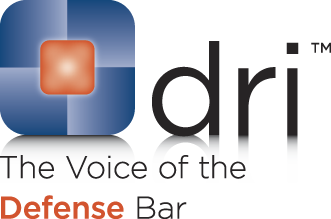Here at the Nevad a Law Blogs we have been imaging Nevada’s Cumis dispute as an old west show-down a la “High Noon”. But now the insurance industry wants its say regarding the dispute. Three insurance organizations have appeared as friends of the court. Like “The Three Amigos”, these Three Amici were hired to save the day. Whether the industry’s arguments prevail is yet to be seen. But in the meantime, let’s explore and evaluate the industry’s arguments.
a Law Blogs we have been imaging Nevada’s Cumis dispute as an old west show-down a la “High Noon”. But now the insurance industry wants its say regarding the dispute. Three insurance organizations have appeared as friends of the court. Like “The Three Amigos”, these Three Amici were hired to save the day. Whether the industry’s arguments prevail is yet to be seen. But in the meantime, let’s explore and evaluate the industry’s arguments.
The Three Amici are the American Insurance Association, the National Association of Mutual Insurance Companies and the Property Casualty Insurers Association of America. The three represent various segments of the industry, whose members each write over $100 billion in premiums. The organizations have taken an active role in promoting the interests of the insurance industry in a number of appellate courts across the country, including the United State Supreme Court.
In their brief, the three Amici reject the Cumis model altogether. They explain the weaknesses of the Cumis rule and offer the court what the industry sees as better alternatives to the problem that Cumis attempts to address.
The Cumis rule was adopted to try and address conflicts that might arise where an insurance-assigned defense attorney finds him or herself in an ethical conflict. As explained HERE, the Nevada Supreme Court has said that an attorney hired by an insurance company to defend its insured is counsel for both the insurance company and the insured. Nevada Yellow Cab v. Eighth Judicial Dist. Court, 123 Nev. 44, 152 P.3d 737 (2007). Sometimes the interests of the insured and the insurance company can run into conflict with each other. The solution imposed by the Cumis decision is to force the insurance company to give up the right granted it in the insurance policy and allow the insured to hire a defense counsel of its own choosing. Where such a conflict arises, the Cumis decision would require the insurance company to pay for the insured’s attorney selected “independent attorney”.
The three Amici point out that Cumis’ solution to the ethical problem has a number of flaws. First, the insured may not have experience evaluating and hiring defense counsel. Thus the insured could end up with an attorney who was less qualified to represent the insured’s interests. Second, because of the insured’s lack of experience, the insured may not be able to worked with selected defense to obtain the best outcome. Third, an insured-selected attorney may not be motivated to control costs. Finally, the Amici point out that it is difficult to draw a hard and fast rule as to when a disqualifying ethical conflict of interest has arisen. As stated in the brief, an automatic ethical conflict does not arise upon issuance of each and every reservation of rights letter, which is what happened in this case. The Amici argue that the court should reject the Cumis model because it is “wrong, unnecessarily difficult to administer, unnecessarily expensive and intellectually flawed.” Amicus Brief at 24.
The Amici’s brief points out since Cumis, many courts have rejected this model and adopted one of three other models. The “single client” model, the “primary client” model and the “freedom of contract” model.
- The “Single Client” Model. The “single client” model is not a viable option under current Nevada law. The “single client” model rejects the concept that the insurance defense attorney has both the insurance company and the insured as the client. It instead says that the attorney’s only client is the insured. The Amici recognize that unless the Nevada Supreme Court overturns the Yellow Cab case that this model will not work. But that is an option. Probably not likely though.
- The “Primary-Client” Model. The “primary-client” or “defeasible client” model as it is sometimes called, works almost the opposite of Cumis. Instead of assuming that the attorney / client relationship between the assigned attorney and the insurance company is the most important, the “primary client” model assumes that the duty of loyalty runs from the attorney to the insured. If a conflict arises, the attorney then represents primarily the insured and not the insurance company making it unnecessary for the insured to hire a self-selected attorney.
- The “Freedom of Contract” Model. This Model preserves to the insurer, the right to select counsel as is allowed in the insurance policy. If a conflict arises that results in the disqualification of the initially assigned defense counsel, the insurance company has the right to “fire” the assigned attorney as its counsel thereby avoiding the conflict. Some circumstances might make that impossible, requiring assignment of a new attorney, but even that new attorney can be chosen by the insurance company because that is what the policy allows for. States that follow that model are Kansas, New Mexico, Virginia and Wisconsin. See, Eye Style Optics, LLC v. State Farm Fire and Cas. Co., 2014 WL 2472096 (D.Kan. 2014); HK Systems v. Admiral Ins. Co., 2005 WL 1563340, 8 (E.D.Wis. 2005); Patrons Mut. Ins. Ass’n v. Harmon, 732 P.2d 741, 745 (Kan. 1987); Am. Employers’ Ins. Co. v. Crawford, 87 N.M. 375, 380-81 (1975); and , Norman v. Ins. Co. of N. Am., 218 Va. 718 (1978). Unlike the “Single Client” Model, the Amici point out that both the “Primary Client” model and the “Freedom of Contract” Model are not inconsistent with Nevada’s rules of ethics or the Yellow Cab” Dual Client mode.
The Amici state that the “Freedom of Contract” model is the way that states are headed. They cite the “Restatement (Third) of the Law Governing Lawyers” as their support. Many readers may not be familiar with the Restatements of the Law. The Restatements are published by the American Law Institute. ALI publishes restatements on a number of topics, including torts, property, judgments and agency. As the titles suggest, the Restatements do not attempt to dictate the law. Instead, the drafting committees research the most recent decisions in the various jurisdictions, picking those decisions that are most well-reasoned and most widely followed. The drafters then do their best to restate the rules cited in those legal precedents. Obviously the rules stated by the Restatement do not have any precedential value. However, because these rules rely on the decision of multiple states, they tend to be persuasive. Nevada has adopted the rules set out in the Restatements in several areas. See for example General Motors Corp. v. Dist. Ct., 122, Nev. 466, 474, 134 P.3d 111, 117 (2006) where the Nevada Supreme Court adopted the choice of law rules set out in the Restatement (Second) of Conflict of Laws.
The Answering Brief by Hansen will be filed soon. The Nevada Law Blogs will be there to examine his rebuttal and report the same here. Please continue to follow the Nevada Law Blogs and provide feedback. In the meantime, if you have any questions, please contact Mike Mills at Mills & Associates who will be glad to speak with you. He can be reached at 702-240-6060 or at mike@mcmillslaw.com.
 Follow
Follow Email
Email


